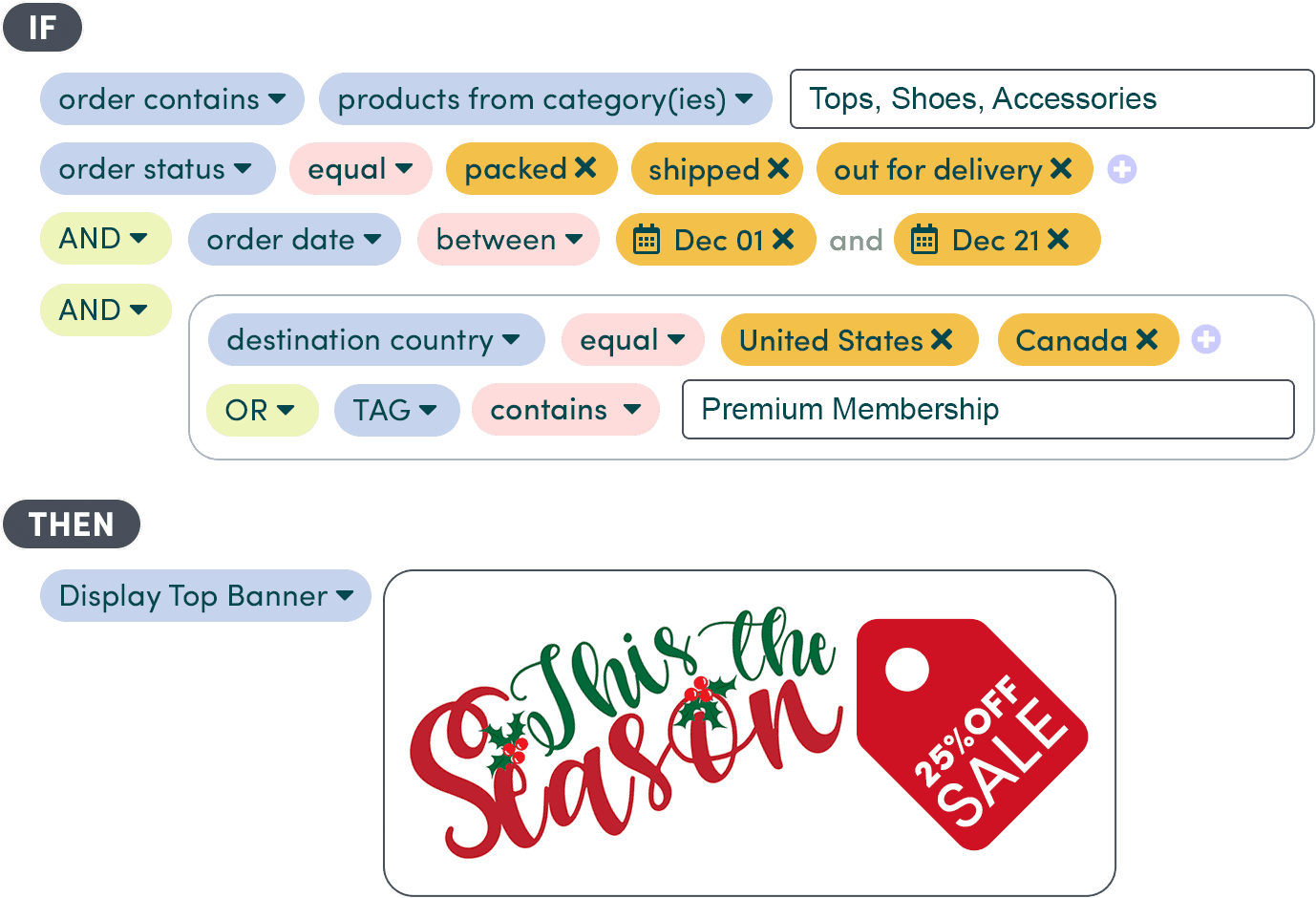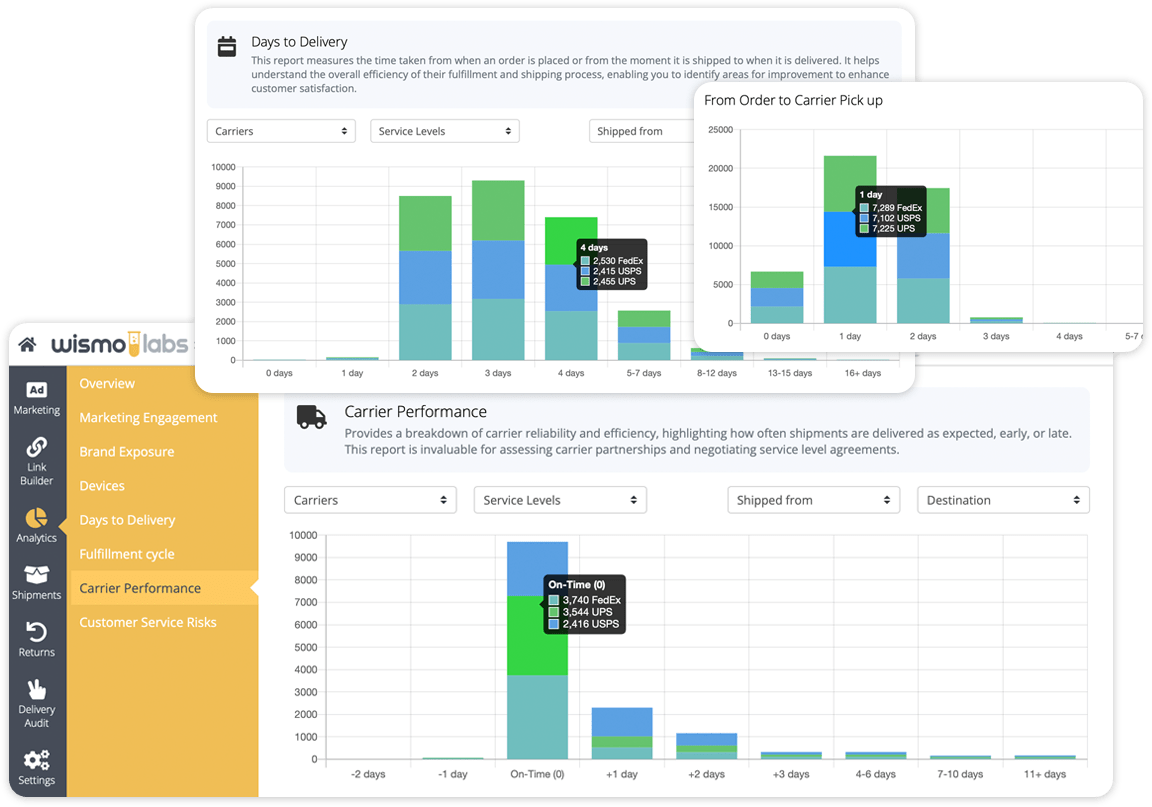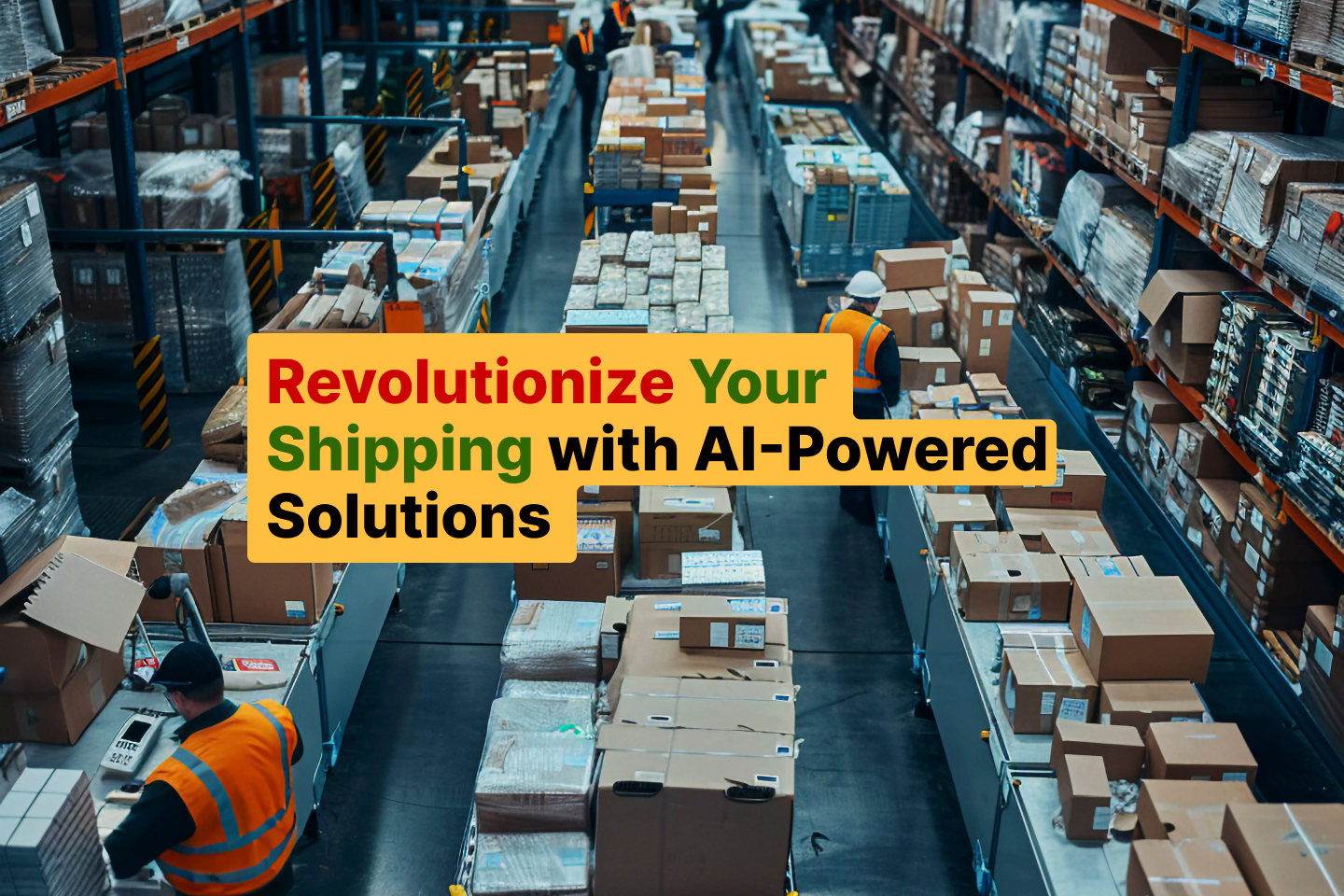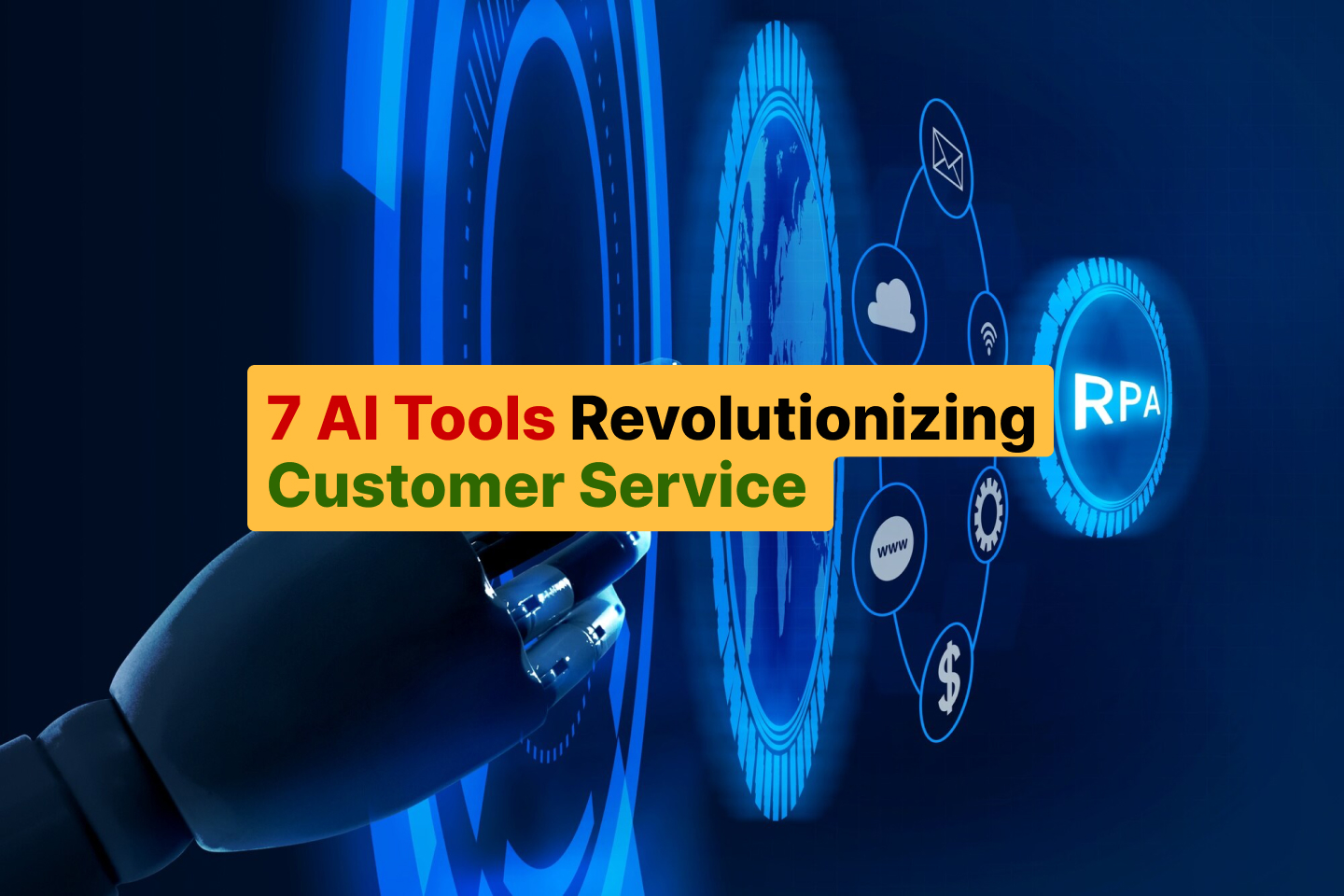In today’s fast-paced world of eCommerce, efficient shipping is crucial for success as businesses compete to deliver exceptional customer experiences. AI solutions are changing how businesses handle their logistics, offering new levels of optimization and customer satisfaction through intelligent automation and data-driven decision making. These advanced technologies are not only improving existing processes but also reshaping the entire shipping landscape with innovative approaches to route optimization, inventory management, and customer communication. Modern consumers expect transparency, speed, and reliability in their shipping experiences, making AI-powered solutions essential for businesses looking to meet these evolving demands. Companies that embrace artificial intelligence in their shipping operations gain significant competitive advantages through reduced costs, improved accuracy, and enhanced customer loyalty. Let’s explore how you can use these AI-powered tools to make your shipping processes better, save money, and stay ahead in the digital marketplace.
| Key Takeaways |
|---|
|
• AI optimizes shipping routes, reducing costs and delivery times • Real-time tracking enhances customer satisfaction and reduces inquiries • Automated notifications keep customers informed throughout the shipping process • AI-driven returns management streamlines a traditionally complex process • Data analytics provide valuable insights for continuous improvement • Implementing AI solutions requires careful planning and integration |
The Power of AI in Shipping Optimization
Artificial Intelligence is making transformative changes in the shipping industry by providing smart, data-driven solutions to traditional logistics challenges. These technologies leverage machine learning algorithms and predictive analytics to analyze vast amounts of shipping data, identifying patterns and opportunities that human operators might miss. The integration of AI into shipping operations enables businesses to make more informed decisions about carrier selection, route planning, and inventory management. By processing real-time information from multiple sources, AI systems can adapt to changing conditions and optimize operations continuously.
AI Shipping Optimization Benefits
Smart pathfinding algorithms
Predictive inventory management
Instant decision making
Accurate time estimates
The implementation of AI in shipping operations delivers measurable improvements across multiple key performance indicators. Businesses utilizing AI-powered logistics solutions experience enhanced operational efficiency through automated decision-making processes that eliminate human error and bias. These systems continuously learn from historical data and real-time events, becoming more accurate and effective over time. The transformative impact of AI extends beyond simple automation, creating entirely new possibilities for supply chain optimization and customer service excellence.
- Reduced shipping costs through optimized routes and carrier selection, enabling businesses to achieve significant transportation expense reductions through intelligent algorithm-driven decisions
- Improved delivery accuracy and speed, with AI systems processing multiple variables simultaneously to determine the most efficient delivery pathways and timing
- Enhanced inventory management and demand forecasting, utilizing predictive analytics to anticipate customer needs and optimize stock levels across multiple locations
- Better customer satisfaction through real-time tracking and updates, providing transparent communication channels that keep customers informed throughout the shipping journey
- Predictive maintenance for shipping vehicles and equipment, using IoT sensors and machine learning to anticipate maintenance needs before equipment failures occur
Real-Time Shipment Tracking with AI
The evolution of shipment tracking technology has reached new heights with AI-powered solutions that provide unprecedented visibility into the shipping process. Modern tracking systems utilize sophisticated algorithms to process data from multiple sources including GPS devices, IoT sensors, weather stations, and carrier APIs to create a comprehensive picture of shipment status. These systems go beyond simple location updates to provide predictive insights about potential delays, route changes, and delivery complications. The integration of machine learning capabilities allows tracking systems to become more accurate over time by learning from patterns in shipping data and external factors that affect delivery performance.
AI Tracking System Components
Precise location tracking
Environmental monitoring
Carrier data connectivity
Predictive analytics
One of the biggest advantages of AI in shipping is the ability to provide real-time tracking information to both businesses and customers. WISMOlabs’ shipment tracking solution uses AI to offer unmatched visibility into the shipping process. This advanced tracking system uses machine learning algorithms to analyze data from multiple sources, including GPS, IoT sensors, and carrier APIs, to provide accurate and up-to-the-minute information on shipment status and location.
AI-powered tracking systems represent a significant advancement over traditional tracking methods by providing not just current location data but also predictive insights about future delivery performance. These systems analyze historical patterns, current conditions, and external factors to generate accurate delivery estimates that account for potential complications. The technology enables businesses to proactively communicate with customers about delivery status changes and take corrective action when issues arise. This level of transparency and proactive communication has become essential for maintaining customer satisfaction in today’s competitive eCommerce environment.
- Provide customers with accurate, up-to-the-minute delivery estimates, utilizing advanced algorithms that process real-time traffic, weather, and logistics data to minimize delivery uncertainty
- Identify potential delays and proactively address issues, enabling logistics teams to implement contingency plans before problems impact customer delivery expectations
- Optimize shipping routes based on real-time data, allowing for dynamic route adjustments that account for traffic conditions, weather changes, and unexpected obstacles
- Reduce customer service inquiries about order status, providing comprehensive tracking information that answers customer questions before they need to contact support
- Enhance security by detecting unusual shipment movement, implementing intelligent monitoring systems that alert operators to deviations from planned routes or suspicious activity
Automated Shipment Notifications: Keeping Customers Informed
Modern customer expectations for shipping transparency have evolved dramatically, with consumers now demanding continuous updates throughout the entire delivery process. AI-powered automated notification systems address this need by generating intelligent, context-aware communications that provide relevant information at the right time through preferred channels. These systems utilize natural language processing to create personalized messages that reflect the specific circumstances of each shipment and the communication preferences of individual customers. The sophistication of modern AI notification systems extends beyond simple status updates to include predictive alerts about potential issues, delivery preparation instructions, and post-delivery follow-up communications.
Smart Notification Flow
WISMOlabs’ automated shipment notifications use AI to provide timely, relevant updates throughout the shipping process. The system intelligently determines the optimal timing and content for each notification based on shipment progress, customer preferences, and historical engagement patterns. Advanced machine learning algorithms analyze customer behavior to personalize message content and delivery timing for maximum effectiveness. These notifications serve multiple purposes beyond simple status updates, including proactive problem resolution, delivery preparation guidance, and opportunities for additional customer engagement.
The effectiveness of automated notification systems lies in their ability to anticipate customer needs and provide information before it’s requested. By analyzing patterns in customer inquiries and delivery complications, these systems can identify common concerns and address them proactively through targeted communications. This approach not only improves customer satisfaction but also reduces the workload on customer service teams by preventing issues before they escalate. The integration of AI enables these systems to continuously improve their effectiveness by learning from customer responses and adjusting their communication strategies accordingly.
- Send personalized updates via email, SMS, or other preferred channels, utilizing customer preference data and engagement history to optimize message delivery timing and format
- Provide proactive notifications about potential delays or issues, enabling businesses to manage customer expectations and demonstrate transparency in their shipping operations
- Offer real-time tracking information directly to customers, creating a seamless experience that keeps customers informed without requiring them to actively check tracking status
- Reduce “Where Is My Order?” (WISMO) calls to customer service, providing comprehensive information that answers common questions before customers need to contact support
- Use AI-driven language models to generate context-aware messages, creating communications that feel personal and relevant to each customer’s specific situation and preferences
AI-Driven Returns Management
Returns management represents one of the most complex challenges in eCommerce operations, involving multiple stakeholders, varied return reasons, and significant logistical coordination. Traditional returns processes often create friction for customers while imposing substantial costs on businesses through manual processing, extended handling times, and inefficient inventory management. AI-powered returns management systems address these challenges by automating decision-making processes, streamlining return authorization procedures, and providing intelligent insights into return patterns and trends. These systems can process return requests instantly, evaluate return eligibility based on sophisticated criteria, and guide customers through optimized return procedures tailored to their specific situations.
AI Returns Process Optimization
AI evaluates return requests
Optimal return pathways
Identify return trends
Automated restocking
WISMOlabs’ eCommerce returns solution leverages artificial intelligence to transform the traditionally cumbersome returns process into a streamlined, customer-friendly experience. The system utilizes machine learning algorithms to analyze historical return data, customer behavior patterns, and product performance metrics to make intelligent decisions about return processing and authorization. Advanced natural language processing capabilities enable the system to understand and categorize return reasons automatically, facilitating faster processing and more accurate inventory management. The integration of predictive analytics allows businesses to anticipate return volumes and allocate resources accordingly, ensuring efficient handling during peak return periods.
Modern AI-driven returns management systems extend beyond simple automation to provide strategic insights that help businesses improve their overall operations. By analyzing return patterns and customer feedback, these systems can identify potential product quality issues, shipping problems, or customer service gaps that contribute to return rates. This intelligence enables businesses to implement proactive measures to reduce future returns while simultaneously improving the returns experience for customers who do need to return items. The continuous learning capabilities of AI systems ensure that returns management processes become more efficient and effective over time.
- Automate the returns process, reducing manual work, utilizing intelligent algorithms to handle return authorization, processing, and tracking without human intervention for routine cases
- Provide customers with easy-to-use self-service return options, creating intuitive interfaces that guide customers through the return process while collecting necessary information efficiently
- Analyze return reasons to identify potential product or shipping issues, enabling businesses to address root causes of returns and implement preventive measures
- Optimize inventory management based on return patterns, providing insights that help businesses better manage stock levels and product lifecycle decisions
- Use predictive analytics to forecast return volumes, allowing businesses to allocate appropriate resources and plan for seasonal fluctuations in return activity
Enhancing the Post-Purchase Experience with AI
The post-purchase phase represents a critical opportunity for businesses to strengthen customer relationships and drive additional value through personalized engagement and proactive service. AI technologies enable companies to create sophisticated post-purchase experiences that extend far beyond simple order confirmation and tracking updates. These systems analyze customer purchase history, browsing behavior, and engagement patterns to deliver highly relevant content, product recommendations, and service offerings that enhance the overall customer journey. The intelligence gathered from post-purchase interactions provides valuable insights for improving future marketing efforts, product development, and customer service strategies.
Post-Purchase AI Engagement Strategy
Tailored recommendations based on purchase history
Smart product suggestions during shipping
Automated satisfaction surveys and reviews

Artificial intelligence transforms post-purchase interactions from simple transactional communications into opportunities for deeper customer engagement and business growth. Advanced AI systems can identify optimal timing for different types of post-purchase communications, ensuring that customers receive relevant information when they’re most likely to be receptive. These systems also enable businesses to create dynamic, personalized content that adapts to individual customer preferences and behaviors, resulting in more meaningful interactions that build long-term loyalty. The ability to predict customer needs and preferences during the post-purchase phase allows businesses to proactively address concerns and provide additional value that exceeds customer expectations.
The strategic implementation of AI in post-purchase experiences creates a competitive advantage by transforming shipping periods from waiting times into active engagement opportunities. Intelligent systems can identify customers who are likely to make repeat purchases and tailor communications to encourage additional orders, while also recognizing customers who may need additional support or reassurance. This level of personalization and proactive service helps businesses build stronger relationships with their customers and increases the likelihood of positive reviews and referrals. The continuous learning capabilities of AI systems ensure that post-purchase strategies become more effective over time as they gather more data about customer preferences and behaviors.
- Providing personalized product recommendations based on purchase history, utilizing sophisticated algorithms that analyze customer behavior patterns to suggest complementary products and services
- Offering timely and relevant cross-selling opportunities during the shipping process, creating strategic touchpoints that present additional products when customers are engaged with their order status
- Sending automated follow-up emails to ensure customer satisfaction, implementing intelligent communication sequences that check on customer experience and address any concerns proactively
- Gathering and analyzing customer feedback to improve products and services, creating systematic processes for collecting and acting on customer insights to drive continuous improvement
- Predicting potential issues or dissatisfaction based on customer behavior patterns, enabling proactive customer service interventions that prevent problems before they impact customer satisfaction
Data Analytics and Insights for Shipping Optimization
The power of AI in shipping extends far beyond operational automation to encompass comprehensive data analytics that provide actionable insights for strategic decision-making. Modern AI analytics platforms can process vast quantities of structured and unstructured data from multiple sources, including historical shipping records, real-time tracking information, weather patterns, traffic conditions, and even social media sentiment analysis. These systems identify complex patterns and correlations that would be impossible for human analysts to detect, revealing opportunities for optimization and improvement that might otherwise remain hidden. The integration of machine learning algorithms enables these analytics platforms to continuously refine their insights as they process more data, becoming increasingly accurate and valuable over time.
AI Analytics Dashboard Components
Delivery time, cost analysis, success rates
Demand forecasting, trend analysis
Service quality, cost effectiveness
Route improvements, cost savings

Advanced AI analytics platforms transform raw shipping data into strategic intelligence that drives informed decision-making across all levels of logistics operations. These systems can identify subtle patterns in customer behavior, seasonal fluctuations in demand, and external factors that affect shipping performance, providing businesses with the insights needed to optimize their operations proactively. The ability to analyze multiple variables simultaneously enables AI systems to provide comprehensive recommendations that account for complex interdependencies between different aspects of shipping operations. This holistic approach to data analysis ensures that optimization efforts in one area don’t inadvertently create problems in another, leading to more effective overall improvements.
The strategic value of AI-powered analytics extends beyond immediate operational improvements to support long-term planning and competitive positioning. By analyzing market trends, customer preferences, and industry developments, these systems can help businesses anticipate future challenges and opportunities in the shipping landscape. This forward-looking capability enables proactive strategy development rather than reactive problem-solving, positioning businesses to capitalize on emerging trends and maintain competitive advantages. The continuous monitoring and analysis capabilities of AI systems ensure that businesses stay informed about changing conditions and can adapt their strategies accordingly.
- Identify trends and patterns in shipping data, utilizing advanced machine learning algorithms to uncover hidden opportunities for cost savings and operational improvements
- Compare carrier performance to optimize selection, providing comprehensive analysis of service quality, reliability, and cost-effectiveness across different shipping providers
- Predict potential issues before they occur, enabling proactive problem-solving through early warning systems that identify emerging problems before they impact operations
- Optimize inventory levels based on demand forecasts, utilizing predictive analytics to balance inventory carrying costs with product availability requirements
- Analyze customer behavior patterns to predict future shipping needs, enabling more personalized service offerings and improved customer satisfaction through anticipatory service
Implementing AI Shipping Solutions: Best Practices
The successful implementation of AI shipping solutions requires a comprehensive approach that encompasses technology selection, organizational preparation, and strategic planning. Businesses must carefully evaluate their current systems, processes, and capabilities to determine the most appropriate AI solutions for their specific needs and constraints. The complexity of AI implementation extends beyond simple software installation to include data preparation, system integration, staff training, and change management processes that ensure successful adoption. A well-planned implementation approach considers both immediate operational needs and long-term strategic objectives, creating a roadmap for AI adoption that delivers measurable value while positioning the organization for future growth and innovation.
AI Implementation Roadmap

The foundation of successful AI implementation lies in thorough preparation and strategic planning that addresses both technical and organizational requirements. Organizations must invest time in understanding their current state, defining clear objectives for AI adoption, and developing realistic timelines for implementation phases. This preparation includes evaluating data quality and availability, assessing system compatibility, and identifying potential integration challenges that could impact implementation success. A comprehensive preparation phase also involves stakeholder engagement, budget planning, and resource allocation to ensure that all necessary elements are in place for successful AI deployment.
Effective AI implementation requires a balanced approach that combines technological sophistication with practical business considerations. Organizations should prioritize solutions that provide immediate value while building toward longer-term strategic objectives, ensuring that AI investments deliver measurable returns throughout the implementation process. The most successful AI implementations often follow a phased approach that allows for learning and adjustment as the organization gains experience with AI technologies. This iterative methodology reduces risk while maximizing the potential for positive outcomes and long-term success with AI-powered shipping solutions.
- Start with a clear understanding of your current shipping processes and pain points, conducting comprehensive audits that identify specific areas where AI can provide the greatest impact and value
- Choose AI solutions that integrate well with your existing systems, ensuring compatibility with current technology infrastructure while planning for future scalability and expansion needs
- Ensure you have clean, high-quality data to feed into your AI systems, implementing data governance processes that maintain accuracy and consistency across all information sources
- Provide thorough training to your team on AI-driven insights, fostering a data-driven culture that empowers employees to leverage AI capabilities effectively in their daily operations
- Start with pilot programs to test and refine AI implementations, allowing for iterative improvements and learning before committing to full-scale deployment across the organization
- Establish clear metrics for measuring AI implementation success, creating accountability frameworks that track progress and ensure continuous improvement in AI-powered shipping operations
- Prioritize data security and privacy in all AI implementations, ensuring compliance with relevant regulations while protecting sensitive customer and business information throughout the AI ecosystem
Frequently Asked Questions
1. How does AI improve shipping accuracy?
AI improves shipping accuracy by analyzing vast amounts of data to predict potential issues, identify optimal routes, and provide real-time tracking information that enables proactive problem resolution. These systems process historical delivery data, current traffic conditions, weather forecasts, and package-specific requirements to determine the most efficient and reliable shipping pathways. Machine learning algorithms continuously learn from shipping outcomes to refine their predictions and recommendations over time. The comprehensive data analysis capabilities of AI systems enable them to account for multiple variables simultaneously, resulting in more accurate delivery estimates and fewer shipping errors.
2. Can AI-powered shipping solutions integrate with my existing systems?
Yes, modern AI-powered shipping solutions are designed with integration capabilities that allow them to work seamlessly with existing eCommerce platforms, warehouse management systems, and logistics infrastructure. Most reputable AI shipping providers offer comprehensive integration tools and APIs that facilitate connection with popular business systems and platforms. The integration process typically involves mapping data flows between systems and configuring communication protocols to ensure smooth information exchange. When evaluating AI shipping solutions, it’s important to discuss integration requirements with potential providers and conduct pilot testing to verify compatibility with your existing technology environment.
3. How does AI help reduce shipping costs?
AI reduces shipping costs through multiple optimization strategies including intelligent route planning, dynamic carrier selection, and predictive inventory management that minimizes storage and handling expenses. Advanced algorithms analyze historical shipping data, real-time market conditions, and carrier performance metrics to recommend the most cost-effective shipping options for each individual shipment. AI systems can also identify patterns in shipping demand that enable bulk shipping opportunities and negotiate better rates with carriers. Additionally, predictive analytics capabilities help businesses optimize inventory levels and warehouse locations to reduce overall logistics costs while maintaining high service levels.
4. Is AI in shipping only for large businesses?
No, AI shipping solutions are increasingly accessible to businesses of all sizes thanks to cloud-based platforms and scalable pricing models that accommodate different business needs and budgets. Many AI shipping providers offer flexible solutions that can grow with your business, starting with basic features and expanding capabilities as your shipping volume and requirements increase. Small and medium-sized businesses can benefit from AI-powered features like automated tracking updates, intelligent route optimization, and basic demand forecasting through affordable subscription models. The democratization of AI technology through cloud computing has made advanced logistics capabilities available to businesses that previously couldn’t afford enterprise-level shipping solutions.
5. How does AI improve the customer experience in shipping?
AI enhances the customer shipping experience by providing accurate, real-time tracking information, proactive communication about potential issues, and personalized post-purchase interactions that build stronger customer relationships. Intelligent notification systems send timely updates through customers’ preferred communication channels while AI-powered chatbots provide instant responses to shipping inquiries and concerns. Predictive analytics enable businesses to anticipate customer needs and address potential issues before they impact the delivery experience. These proactive customer service capabilities, combined with transparent communication and accurate delivery estimates, create a superior shipping experience that increases customer satisfaction and loyalty.
6. What data security measures are in place for AI shipping solutions?
Reputable AI shipping solution providers implement comprehensive security measures including data encryption, secure API connections, access controls, and compliance with industry regulations such as GDPR and CCPA. These systems utilize advanced security protocols to protect sensitive customer information, shipping data, and business intelligence throughout the AI processing pipeline. Many providers offer detailed security documentation and certifications that demonstrate their commitment to data protection and privacy. When selecting AI shipping solutions, businesses should evaluate security features, compliance standards, and data handling policies to ensure they meet their specific security requirements and regulatory obligations.
7. How long does it take to implement AI shipping solutions?
Implementation timelines for AI shipping solutions vary depending on the complexity of your existing systems, the scope of AI features being deployed, and the level of customization required for your specific business needs. Simple AI tracking and notification systems can often be implemented within a few weeks, while comprehensive AI logistics platforms may require several months for full deployment. Most providers recommend a phased implementation approach that begins with pilot testing of core features before expanding to full-scale deployment across all shipping operations. The key to successful implementation is thorough planning, adequate staff training, and ongoing optimization based on real-world performance data and user feedback.
Conclusion: Embracing the Future of Shipping with AI
The transformative impact of AI-powered solutions in the shipping industry represents a fundamental shift toward more intelligent, efficient, and customer-centric logistics operations. Businesses that embrace these advanced technologies position themselves at the forefront of innovation, gaining significant competitive advantages through reduced costs, improved accuracy, and enhanced customer satisfaction. The comprehensive benefits of AI implementation extend beyond simple operational improvements to create strategic value through better decision-making, proactive problem resolution, and deeper insights into customer needs and market trends. As AI technology continues to evolve and mature, the opportunities for optimization and innovation in shipping operations will only continue to expand.
The journey toward AI-powered shipping excellence requires careful planning, strategic investment, and commitment to continuous improvement, but the potential rewards justify these efforts. Companies that implement AI solutions thoughtfully and systematically can expect to see measurable improvements in operational efficiency, cost reduction, and customer satisfaction metrics. The ability to provide fast, accurate, and transparent shipping services has become a critical differentiator in today’s competitive eCommerce landscape, making AI adoption not just beneficial but essential for long-term success. The future of shipping is being shaped by artificial intelligence, and businesses that act now to integrate these technologies will be best positioned to thrive in the evolving marketplace.
From real-time tracking and automated notifications to data-driven insights and efficient returns management, AI offers comprehensive tools to streamline shipping operations and create exceptional customer experiences. The continuous learning capabilities of AI systems ensure that these benefits compound over time, with shipping processes becoming more efficient and effective as the technology gains more experience with your specific business needs. Remember that successful AI implementation requires understanding your current needs, selecting appropriate solutions, and maintaining a commitment to ongoing optimization based on data and feedback. With the right strategy and tools, you can transform shipping from a necessary expense into a powerful competitive advantage that drives business growth and customer loyalty in the digital age.



